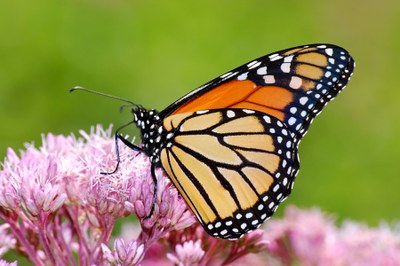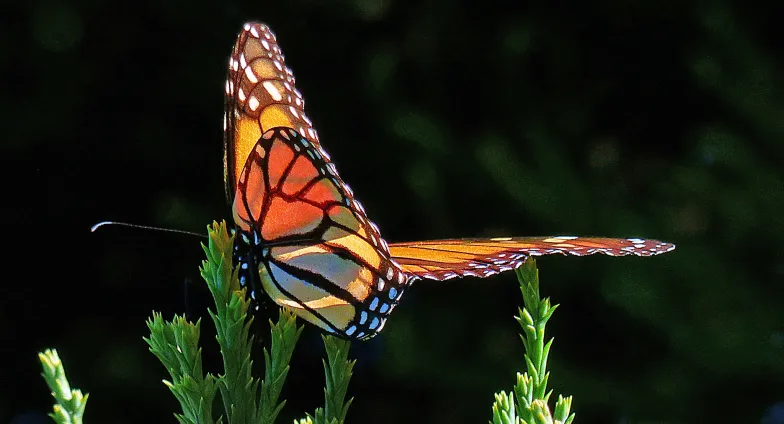How To Help Restore Monarch Butterflies in North Dakota
Monarchs in North Dakota are happy today. They are feeding and breeding in our flower-filled prairies and gardens.
Everyone loves monarchs for their bright orange wings and gentle habits. I invite you to take a closer look at this insect and you will find a true marvel of nature:

No other insect on earth can match the migration of the monarch. In late August, the monarchs of North Dakota begin a round-trip pilgrimage to Mexico covering over 5,000 miles. They will soar in the skies like hawks, gliding 25 miles or more a day. Remarkably, they will arrive to the same villages and even the same trees their great-grandparents visited the year before.
Did you know monarchs can scare away predators that are over 100 times their size? Imagine that! They gain these powers by eating and storing toxins from milkweed in their bodies. Many birds, lizards and other predators have evolved to avoid monarchs due to these toxins.
Monarchs are amazing creatures but also very fragile. Their populations have declined by 80% over the last 20 years. This is due to many factors including the loss of overwintering sites in Mexico. In the USA they have lost breeding habitats due to agricultural expansion. The development of herbicide-tolerant crops has led to major increases in herbicide use and eliminated milkweed patches growing in pockets of farm fields where it once grew abundantly.
We can restore populations of monarchs by growing ornamental milkweeds (Asclepias spp.) in our gardens. Swamp milkweed is shown above. Monarchs cannot survive without milkweed. They lay eggs in milkweed, eat milkweed as caterpillars for its nourishment and protective toxins, and consume milkweed nectar as butterflies.
Besides growing a few milkweeds, try to reduce the unnecessary use of poisonous insecticides. These chemicals threaten monarchs, pollinators and other beneficial insects.
Written by Tom Kalb, Extension Horticulturist, North Dakota State University. The photo was made available under a Creative Commons license specified by the photographer: Brad Smith. This article was originally published in the NDSU Yard & Garden

